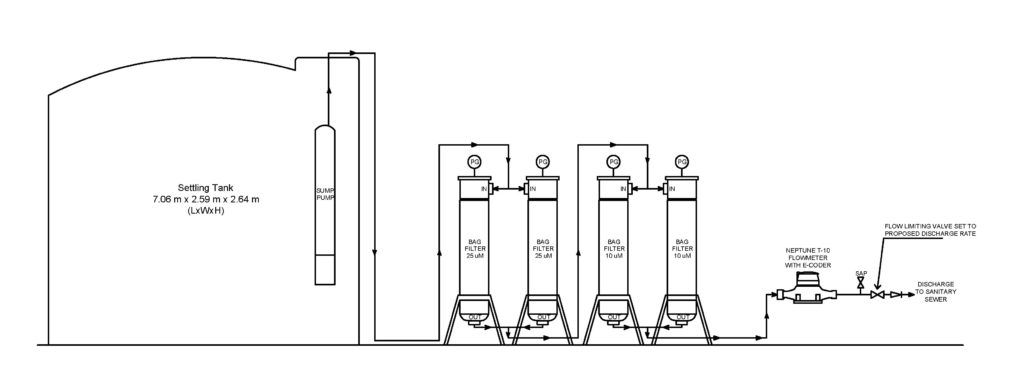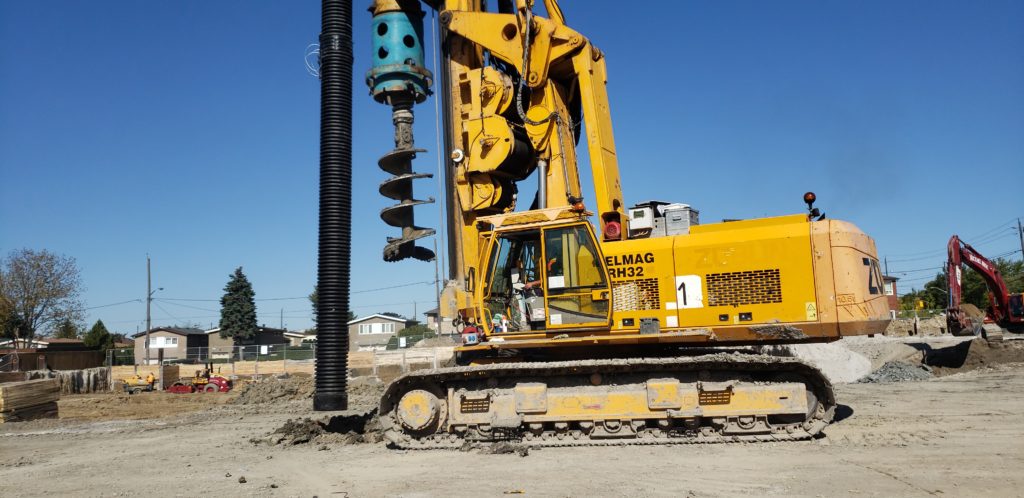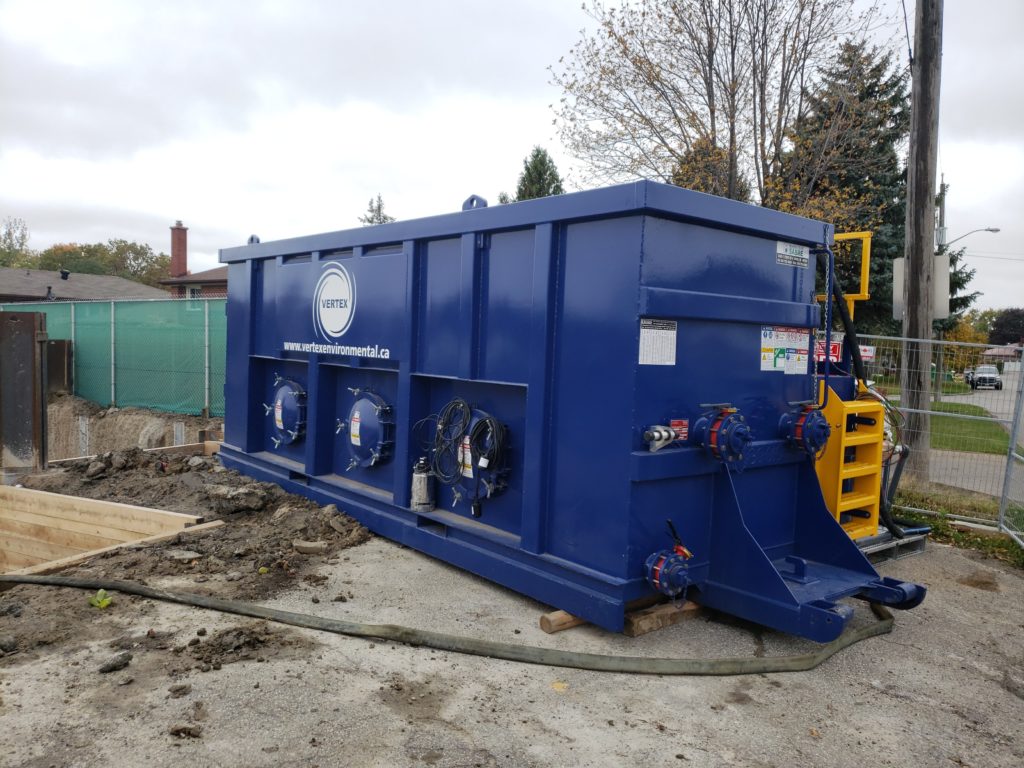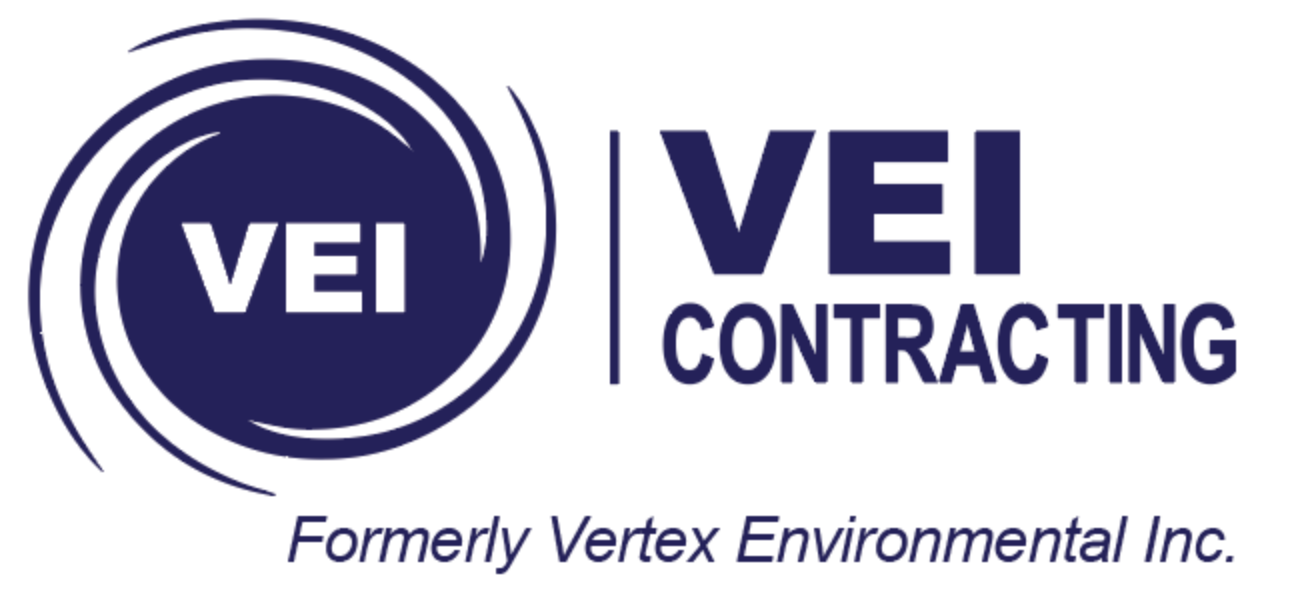Residential Condominium SDA Case Study
Background: A new residential condominium development in Toronto with three levels of underground parking levels. The developer retained Vertex to prepare dewatering and groundwater treatment plans, and to process two sewer discharge agreement (SDA) permits to cover both the short-term construction and the permanent, long-term, groundwater discharge of the building.

Review: Vertex reviewed all project documents including the hydrogeological reports and water quality analyses. We soon identified that the water quality analysis in the hydrogeological report was going to be well over nine months old when the SDA application was to be submitted. Toronto Water sets a nine-month expiry limit on water quality analyses. Therefore, processing time was saved time by identifying this as a requirement up front and collecting a new sample to include with the initial application.
Water Quality: The site had exceedances of metals and Total Suspended Solids (TSS) relative to the sanitary and storm sewer discharge limits. Vertex designed both a temporary and permanent treatment system capable of removing these contaminants. The most cost-effective approach was to discharge the water to the sanitary sewer system. After determining this Vertex provided the necessary process flow drawings and schematic drawings showing details of the proposed treatment system. This allowed the design drawings to be compiled in a short period of time without involving multiple other parties.

Dewatering: Vertex also developed a dewatering plan for the site and worked with the developer to find cost savings by installing the dewatering system sumps via the shoring rig that was already present on-site.

Short-Term Operation: During construction the Site operated under the temporary SDA with the designed treatment system. Weekly maintenance visits were completed and no exceedances of the sanitary sewer discharge limits were detected over a two-year period.

As with many projects, COVID and other delays extended the construction schedule significantly. This resulted in the temporary SDA requiring multiple extensions. Overall, three extensions were processed by Vertex and the Site always had an active agreement in place. This resulted in no requirement to haul groundwater from the Site which would have added significantly to costs and logistical complexity.
Switch to Long-Term Operation: Making the switch from a temporary SDA to a permanent SDA is a big step and the timing this transition is very important. Permanent SDAs require all long-term infrastructure to be in place (i.e., sumps, pumps, permanent piping and connections). Permanent SDAs typically also have lower allowable discharge quantities and flow rates. This is because the building has been fully enclosed and stormwater is being directed away so the Site is only discharging groundwater. If a Site transitions to their permanent SDA too soon and a large storm event occurs there is a high likelihood that they may exceed their newly allowed discharge quantity and be in violation of their SDA.
Vertex worked with the development to transition to the long-term SDA at the proper time. The building was fully enclosed with windows, storm water was being directed away from the groundwater sump pits, and the permanent discharge infrastructure had been installed. The City was notified of the request to switch to the permanent agreement and scheduled an inspector to review the discharge process. Sign-off was achieved and the site has since been operating in compliance under their permanent SDA.
While it may sound straightforward there are a lot of moving parts and timelines to consider in relation to groundwater management during construction and post-development. The experts at Vertex are here to help! Feel free to reach out to us with any questions you may have about construction dewatering, water treatment systems or sewer discharge agreements.

